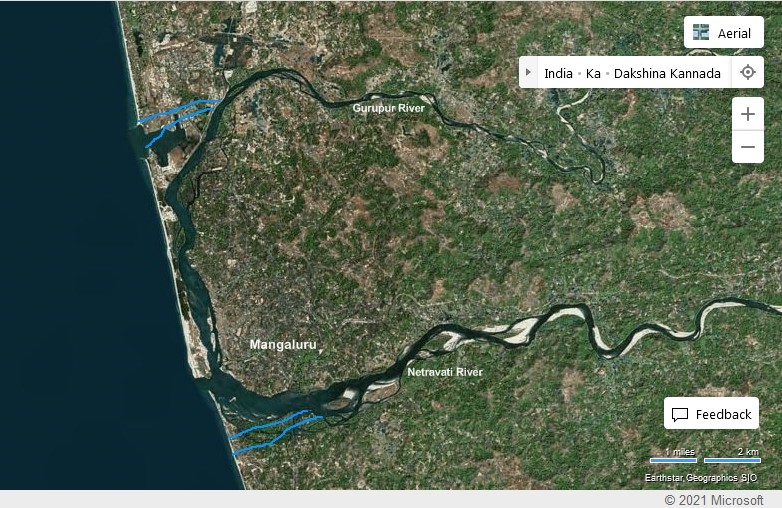Description

Disclaimer: Copyright infringement not intended
Context
National Green Tribunal takes action on Netravati waterfront promenade development project.
Details
Netravati River
- The Netravati River originated the Chikkamagaluru district of Karnataka at Bangrabalige valley, Yelaneeru Ghat in Kudremukh.
- Also known as Nethravathi, the Netravati River is a major source of water to Bantwal and Mangalore.
- The total length of the Netravathi is 103 km from its source to the outfall.
Course of Netravati River
- The Netravati River originates in the Western Ghats in the Bangrabalike forest Valley of Yellaner Ghats of the Kudremukha range in Karnataka.
- The river drains an area of 3,657 sq km.
- The river merges with the Kumaradhara River, which also originates in Western Ghats in the Subramanya range near Uppinangadi village.
- Along its course, the Netravati also flows through the popular pilgrim place called
- Other tributary: Hemavati
- During the monsoon season, the Netravati River overflows, this has an adverse effect on the nearby areas.
- Under the world’s biodiversity conservation project, the catchment area of Netravati River is selected as one of the 30 hotspots for biodiversity conservation.
Netravati riverfront project and NGTs cognizance
- National Environmental Conservation Foundation (NECF) had raised concerns voiced by stakeholders regarding the project’s impact on the lives of common people in the area.
- The Netravati Waterfront Promenade Project has been mired in controversy due to alleged violations of Coastal Regulation Zone (CRZ) norms and environmental regulations.
- NGT has taken suo motu cognisance and directed the formation of a joint committee to submit a detailed report on the project.

NATIONAL GREEN TRIBUNAL
- The National Green Tribunal has been established on 18.10.2010 under the National Green Tribunal Act 2010
Composition
- It comprises the Chairperson, the Judicial Members and the Expert Members.
- They shall hold office for a term of 5 years and are not eligible for reappointment.
- The Chairperson is appointed by the Central Government in consultation with the Chief Justice of India (CJI).
- A Selection Committee shall be formed by the central government to appoint the Judicial Members and Expert Members.
- There are to be at least 10 and a maximum of 20 full-time Judicial members and Expert Members in the tribunal.
Power and Functions
- Effective and expeditious disposal of cases relating to environmental protection and conservation of forests and other natural resources including enforcement of any legal right relating to environment and giving relief and compensation for damages to persons and property and for matters connected therewith or incidental thereto.
- The Tribunal shall not be bound by the procedure laid down under the Code of Civil Procedure, 1908, but shall be guided by principles of natural justice.
- The Tribunal's dedicated jurisdiction in environmental matters shall provide speedy environmental justice and help reduce the burden of litigation in the higher courts.
- The Tribunal is mandated to make and endeavour for disposal of applications or appeals finally within 6 months of filing of the same.
Principal Place of Sitting
- Initially, the NGT is proposed to be set up at five places of sittings and will follow circuit procedure for making itself more accessible.
- New Delhi is the Principal Place of Sitting of the Tribunal and Bhopal, Pune, Kolkata and Chennai shall be the other four place of sitting of the Tribunal.
|
PRACTICE QUESTION
Netravati River flowing through which of the following state?
- Karnataka
- Kerala
- Tamil Nadu
- Maharashtra
Answer A
|
















